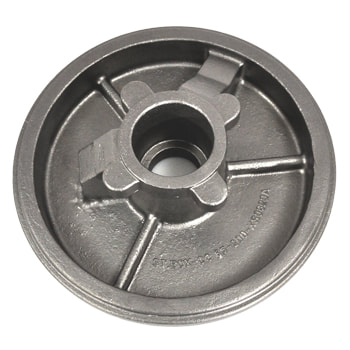It is the oldest metal making process for duplicating or remaking the features from an original sculpture and then casting multiple similar metal parts as of the sample piece.
The process of investment casting involves the steps designed and needed to replicate the intricate designs of the sample piece for the final product. Here’s the summary of the casting process –
Investment casting is in a lot of ways similar to lost-wax casting and it is an old metal making process to duplicate the features of the original sculpture and then cast multiple identical metal parts that are an identical match to the sample metal part.
Intricate detailing and designing are achieved successfully through the process.
An original wax model similar to the sample metal part is made and then mild making is required. An outer rigid mild is prepared by dipping the wax pattern in ceramic slurry plus sand-like stucco.
Investment casting can be applied in any industry as it allows the production of a wide variety of products, but it is essential to use
the right investment casting material because it eliminates unwanted casting defects and limits the need for secondary processing. Here are few of the many you can use in investment casting:
Investment casting is in a lot of ways similar to lost-wax casting and it is an old metal making process to duplicate the features of the original sculpture and then cast multiple identical metal parts that are an identical match to the sample metal part.
Intricate detailing and designing are achieved successfully through the process.
An original wax model similar to the sample metal part is made and then mild making is required. An outer rigid mild is prepared by dipping the wax pattern in ceramic slurry plus sand-like stucco.
Investment casting can be applied in any industry as it allows the production of a wide variety of products, but it is essential to use
the right investment casting material because it eliminates unwanted casting defects and limits the need for secondary processing. Here are few of the many you can use in investment casting:
- Stainless Steel
- Carbon Steel
- Low Alloy Steel
- Aluminium Alloy
- Copper Alloy
- Super Alloy
- Cast Iron
An original wax pattern containing all the features of the sample design is made and is surrounded by an outer shell by dipping the pattern in ceramic slurry. Repeated dipping is needed to get the desired thickness of the shell as the thickness helps the shell to contain the molten metal.
It is a meticulous process carried out in the following steps
- Creating the master pattern - An original pattern is created with the same details as the final component with ease for thermal contraction. Also, a master die is created to fit the master pattern.
- Mounting the wax patterns and creating a tree - Liquid wax is poured into the mould to create a wax pattern identical to the final casting. Multiple wax patterns are cast in one batch pour by assembling them into one large pattern and attaching them to a sprue to form a tree.

Comments
Post a Comment